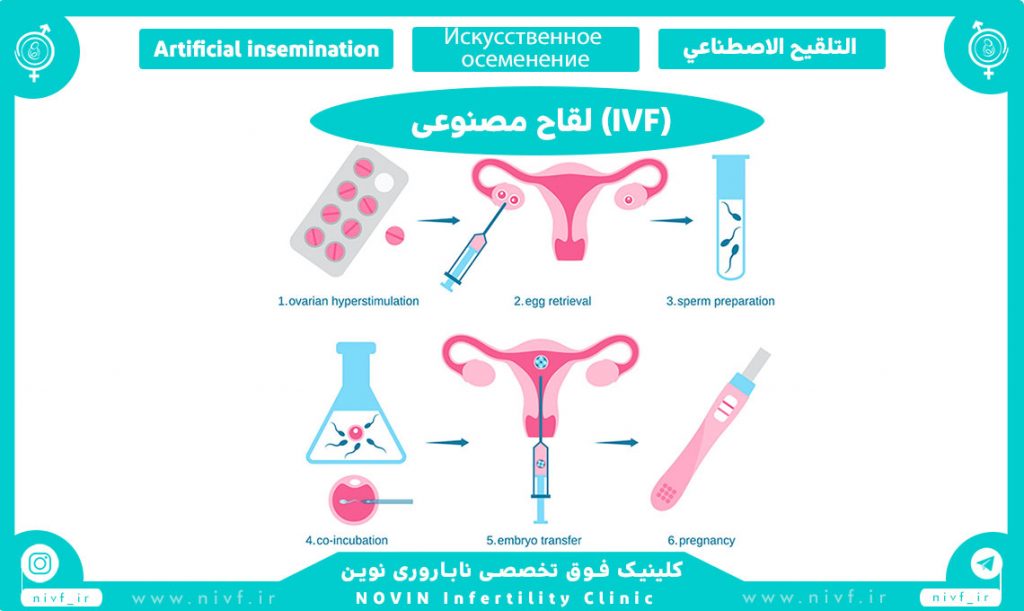IVF

In vitro fertilization (IVF) is the joining of a woman’s egg and a man’s sperm in a laboratory dish. In vitro means outside the body. Fertilization means the sperm has attached to and entered the egg.
Normally, an egg and sperm are fertilized inside a woman’s body. If the fertilized egg attaches to the lining of the womb and continues to grow, a baby is born about 9 months later. This process is called natural or unassisted conception.
IVF is done to help a woman become pregnant. It is used to treat many causes of infertility, including:
- – Advanced age of the woman
- – Damaged or blocked Fallopian tubes (can be caused by pelvic inflammatory disease or prior reproductive surgery)
- – Endometriosis
- – Male factor infertility, including decreased sperm count and blockage
- – Unexplained infertility
There are five basic steps to IVF
Step 1: Stimulation, also called super ovulation
Medicines, called fertility drugs, are given to the woman to boost egg production. Normally, a woman produces one egg per month. Fertility drugs tell the ovaries to produce several eggs. During this step, the woman will have regular transvaginal ultrasounds to examine the ovaries and blood tests to check hormone levels.
Step 2: Egg retrieval
A minor surgery, called follicular aspiration, is done to remove the eggs from the woman’s body. The woman will be given medicines so she does not feel pain during the procedure. Using ultrasound images as a guide, the health care provider inserts a thin needle through the vagina and into the ovary and sacs (follicles) containing the eggs. The needle is connected to a suction device, which pulls the eggs and fluid out of each follicle, one at a time. The procedure is repeated for the other ovary. There may be some cramping after the procedure, but it will go away within a day.

Step 3: Insemination and Fertilization
The man’s sperm is placed together with the best quality eggs. The mixing of the sperm and egg is called insemination. Eggs and sperm are then stored in an environmentally controlled chamber. The sperm most often enters (fertilizes) an egg a few hours after insemination. If the doctor thinks the chance of fertilization is low, the sperm may be directly injected into the egg. This is called intracytoplasmic sperm injection (ICSI).

Step 4: Embryo transfer
When the fertilized egg divides, it becomes an embryo. Laboratory staff will regularly check the embryo to make sure it is growing properly. Within about 5 days, a normal embryo has several cells that are actively dividing. Embryos are placed into the woman’s womb 3 to 5 days after egg retrieval and fertilization. The procedure doesn’t need anesthesia. The doctor inserts a thin tube (catheter) containing the embryos into the woman’s vagina, through the cervix, and up into the womb. If an embryo sticks to (implants) in the lining of the womb and grows, pregnancy results. More than one embryo may be placed into the womb at the same time, which can lead to twins, triplets, or more. The exact number of embryos transferred is a complex issue that depends on many factors, especially the woman’s age.

Two weeks after the ET, a β-HCG blood test will show your pregnancy result.


